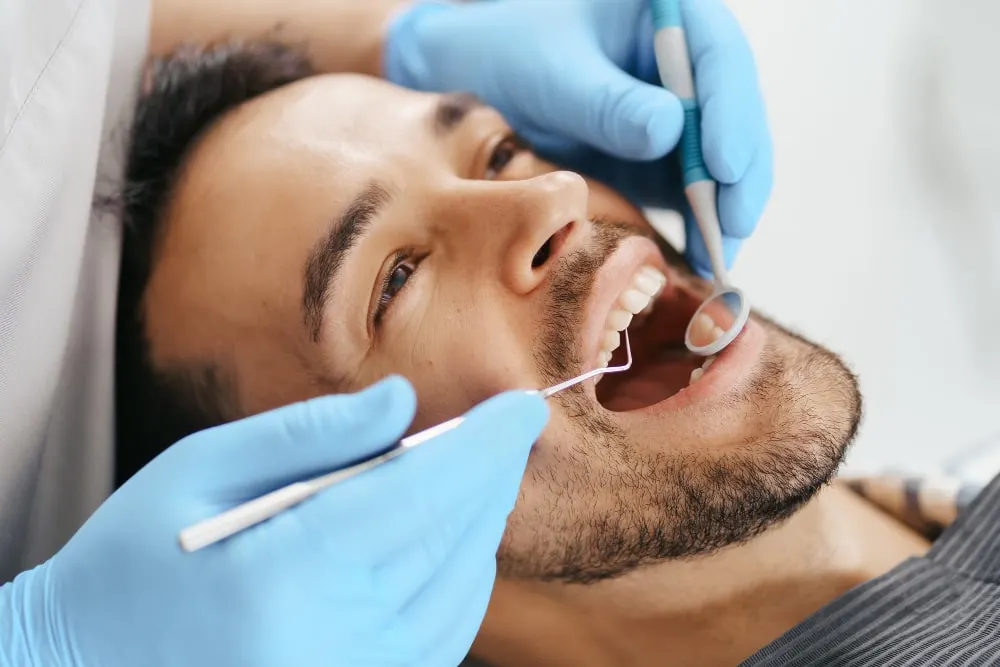Have you noticed that sharp, uncomfortable feeling when enjoying your favorite ice cream or sipping hot coffee? Well, it’s a common issue across the globe. Sensitive teeth caused by receding gums affect millions of people, leading many to consider gum grafting. But the idea of gum surgery can sound intimidating. The first question that usually comes to mind is, “Will gum grafting hurt?”
The truth is, gum grafting doesn’t have to be the painful ordeal you might have imagined. With modern dental techniques, most patients find the experience much easier than expected. Still, it’s natural to have questions and concerns about what to expect during and after the procedure.
In this article, we’ll explore what gum grafting involves, address how painful it really is, and share essential tips to manage any discomfort, helping you feel informed and confident before stepping into your dentist’s office.

Understanding Gum Grafting
Gum grafting is a surgical procedure designed to restore receded gum tissue. It involves transplanting tissue to areas where the gums have receded, covering exposed tooth roots and enhancing the gum line’s appearance and health. There are several types of gum grafts:
- Connective-Tissue Grafts: The most common method is where tissue is taken from under the surface of the roof of your mouth and stitched to the affected gum area.
- Free Gingival Grafts: Similar to connective-tissue grafts, but the tissue is directly taken from the roof of the mouth without creating a flap.
- Pedicle Grafts: Tissue is taken from the gum near the affected tooth and rotated to cover the exposed root.
Is Gum Grafting Painful?
During the gum grafting procedure, patients are typically administered a local anesthetic to numb the area, ensuring a pain-free experience. Some may feel pressure or movement but not pain. For those with dental anxiety, sedation options are available to enhance comfort.
Post-Operative Discomfort
After the anesthesia wears off, it’s common to experience some discomfort or pain. According to a study, mild pain is most frequently reported, with moderate to severe pain being less common. The discomfort typically lasts about two days. Factors influencing post-operative pain include individual pain tolerance, the type of graft performed, and the specific techniques used during surgery.


Managing Pain After Surgery
Effective pain management strategies can significantly ease recovery:
- Medications: Over-the-counter pain relievers like ibuprofen or acetaminophen are commonly recommended. In some cases, your dentist may prescribe stronger pain medication.
- Dietary Adjustments: Stick to soft foods such as yogurt, mashed potatoes, and smoothies to avoid disturbing the surgical site. Avoid hard, spicy, or acidic foods that might irritate the area.
- Oral Hygiene: Follow your dentist’s instructions carefully. Typically, you’ll be advised to avoid brushing or flossing the treated area for a specified period and may be given a special mouth rinse to help control plaque during healing.
- Physical Activity: Limit strenuous activities for the first 24 hours to minimize bleeding and swelling.
Recovery Timeline
Most patients find that discomfort subsides within a few days, and they can return to normal activities shortly after. Complete healing of the gums may take one to two weeks, depending on the individual and the extent of the graft.
When to Consult Your Dentist
While some discomfort is normal, certain symptoms warrant prompt attention:
- Excessive Bleeding: If bleeding persists despite applying gentle pressure.
- Severe Pain: Pain that isn’t alleviated by prescribed medications.
- Signs of Infection: Such as fever, pus, or unusual swelling.
If you experience any of these symptoms, contact your dental professional immediately.
Final Word
The prospect of gum grafting might seem daunting, especially with concerns about pain. However, with modern anesthetic techniques and effective post-operative care, most patients find the procedure and recovery to be manageable. Addressing gum recession through grafting not only alleviates discomfort but also plays a crucial role in preserving your oral health and enhancing your smile’s aesthetics. If you’re considering this procedure, consult with your dental professional to discuss any concerns and ensure you’re well-informed about the process
Still wondering if gum grafting is right for you? Click here or call 425-775-2002 to book a free consultation with Dr. Ellie Javadi at Orchid Periodontics & Dental Implants Seattle.



